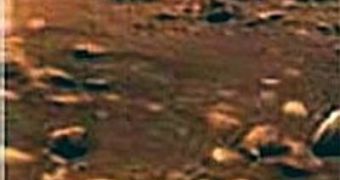Researchers at the Stanford University have come up with a new study, which sets forth the idea that Saturn's largest moon, Titan, may host a series of underground hydrocarbon oceans, as well as mountains whose tops are below the average height of the planet. The paper detailing the finds will be published in an upcoming issue of the journal Science, but the piece is already available on the publication's website.
Astronomers and Cassini-Huygens mission specialists first identified the hydrocarbon lakes on Titan's poles in 2007, and, ever since, they've been wondering how it's possible that they do not exist anywhere else on the surface.
“Since the poles are squished in with respect to the equator, if there is a hydrocarbon 'water table' that is more or less spherical in shape, then the poles would be closer down to that water table and depressions at the poles would fill up with liquid,” Stanford geophysicist and electrical engineer Howard Zebker, who is a member of the Titan research team, explains.
The researcher likens the shape of Titan to that of a rubber ball that has been pressed on by a foot. Both poles are flatter than the Equator, which would allow for the formation of “sinks” able to host liquid methane in what appear to be large lakes. “While some asymmetry is expected from Saturn's gravitational pull, there is obviously something going on that causes Titan to have a different shape than expected,” the expert adds.
Talking about the moon's asymmetrical shape, researchers are in the dark. The celestial body is not even equally flattened, and has some axes larger than the others, a very peculiar shape. One of the potential reasons for this would be that Saturn exerts a large pull on Titan, and thus modifies the satellite's shape. “Another is that there are active geophysical processes occurring inside Titan that further distort the shape. There are probably many other explanations as well, but we don't have enough information from this one experiment to be able to distinguish those,” Zebker reveals.
“The things that we would expect to exist on the surface of Titan would either be solid hydrocarbon materials, essentially frozen ethane and methane, and that is fairly light, and then frozen water ice, which is denser. If the mountains are composed of water ice and the plain features in between are composed of these solid hydrocarbons, that could lead to this kind of a situation,” he concludes.

 14 DAY TRIAL //
14 DAY TRIAL //